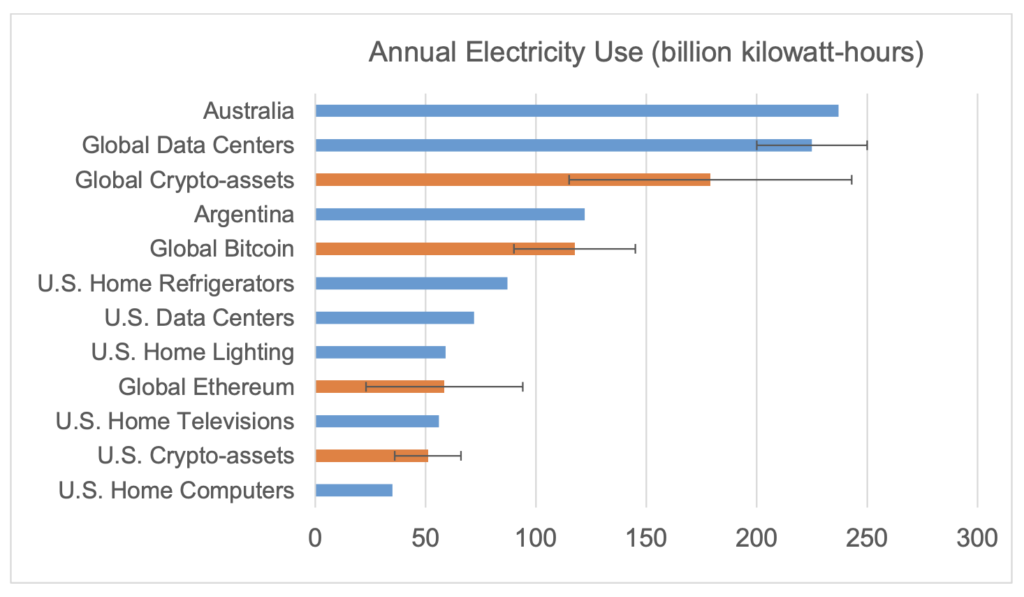Crypto mining uses as much energy as all computers in US, White House says

Crypto mining in the US now uses as much energy as all household computers or lighting, according to a report by the White House Office of Science and Technology released on Thursday.
The findings reveal that the US is thought to host a third of all crypto operations, accounting for about 0.9% to 1.7% of total US electricity usage — on par with the amount consumed by “all home computers or all residential lighting” in the country.
Additionally, crypto activity accounts for 0.4% to 0.8% of all US greenhouse gas emissions, about the same as the amount emitted from diesel fuel used in US railroads. Globally, US crypto activity accounts for 0.2% to 0.4% of all greenhouse gas emissions.
“Electricity usage from digital assets is contributing to GHG emissions, additional pollution, noise, and other local impacts, depending on markets, policies, and local electricity sources,” the White House report said.
How to mitigate emissions from US crypto mining
President Biden’s executive order in March requested the 46-page report, seeking to not only understand the outputs of crypto mining in the US but advice on how to mitigate its climate impacts.
The report suggests that “depending on the energy intensity of the technology used, crypto-assets could hinder broader efforts to achieve net-zero carbon pollution consistent with US climate commitments and goals.”
To ensure “responsible” crypto activity in the future, the Environmental Protection Agency (EPA) and the Department of Energy (DOE) is recommended to work with “states, communities, the crypto-asset industry, and others” to find ways to establish standards for low energy and water usage in crypto mining, as well as mitigate noise generation and carbon creation.

Read more: Biden’s executive order: Incoming crypto reports explained
“Should these measures prove ineffective at reducing impacts, the Administration should explore executive actions, and Congress might consider legislation, to limit or eliminate the use of high energy intensity consensus mechanisms for crypto-asset mining,” the report said.
Additionally, the report calls on energy regulators and grid operators to ensure the stability of electricity grids amid a rise in crypto activity. It asks for better data from crypto miners to “understand, monitor, and mitigate impacts” in a “privacy-preserving manner.”
White House optimistic about alternative crypto mining
The report points out the potential for flared and vented methane as a way to fuel crypto mining — a method that has recently risen in popularity.
“While the EPA and the Department of the Interior have proposed new rules to reduce methane for oil and natural gas operations, crypto-asset mining operations that capture vented methane to produce electricity can yield positive results for the climate, by converting the potent methane to [carbon dioxide] during combustion.”
“Mining operations, though, could potentially be more reliable and more efficient at converting methane to CO2.”
While the US goal of net-zero emissions would mean methane venting or flaring wouldn’t exist, the report said that “crypto-asset mining that installs equipment to use vented methane to generate electricity for operations is more likely to help rather than hinder US climate objectives.”
For more informed news, follow us on Twitter and Google News or listen to our investigative podcast Innovated: Blockchain City.
